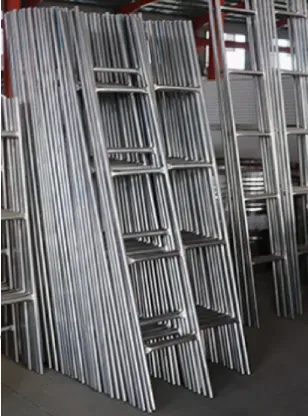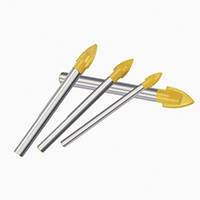loading...
- No. 9, Xingyuan South Street, Dongwaihuan Road, Zaoqiang County, Hengshui, Hebei, China
- admin@zjcomposites.com
- +86 15097380338
- Welcome to visit our website!
Premium Fibreglass Walkway Mesh Durable & Slip-Resistant
- Technical advantages and performance data analysis
- Comparative evaluation of leading manufacturers
- Customization capabilities for diverse applications
- Industry-specific implementation case studies
- Load capacity and safety factor examination
- Installation protocols and maintenance requirements
- Advancements in composite material technology

(fibreglass walkway mesh)
Understanding Fibreglass Walkway Mesh Solutions
Fibreglass walkway mesh, also known as FRP grating, provides critical safety infrastructure across industrial sectors. This corrosion-resistant solution creates stable platforms for personnel access while withstanding harsh chemical exposure, extreme temperatures, and heavy mechanical loads. The composite architecture combines fibreglass reinforcement with thermosetting resin matrices to create non-conductive structural elements. Industries report 75% reduced maintenance costs compared to traditional metal alternatives after switching to fibreglass walkway systems. Chemical processing plants particularly benefit from its non-sparking characteristics when handling flammable substances.
Material Performance Metrics Comparison
Technical specifications demonstrate clear advantages over conventional materials. Fibreglass mesh maintains structural integrity at temperatures ranging from -60°F to 180°F (±51°C to 82°C), outperforming steel alternatives which become brittle in cold environments. The material’s tensile strength ranges between 25,000–35,000 psi, depending on resin composition and manufacturing methods. Electrical non-conductivity prevents stray current corrosion and eliminates spark hazards – critical in petrochemical environments where metal walkways require complex grounding systems. Additionally, fibreglass exhibits excellent fatigue resistance with no detectable loss in strength after 200 million load cycles at 40% ultimate load capacity.
| Property | Steel Grating | Aluminum Grating | Fibreglass Walkway Mesh |
|---|---|---|---|
| Corrosion Resistance | Requires galvanization | Moderate | Exceptional (ASTM B117) |
| Weight (lbs/ft²) | 11.8–18.7 | 4.2–7.1 | 1.5–3.2 |
| Impact Strength (ft-lb/in) | 25–48 | 15–25 | 32–45 |
| Service Life (years) | 7–15 | 12–20 | 25+ |
| Slip Resistance (wet) | 0.5–0.7 (Coated) | 0.5–0.65 | 0.86 (Aggregate top) |
Leading Manufacturer Profiles
The industrial grating market features specialized suppliers with distinct production processes and quality standards. Strongwell utilizes pultrusion manufacturing for dimensional precision in their DURAGRATE systems, offering load capacities to FEA Class C (wheel loads exceeding 10,000 lbs). Bedford Reinforced Plastics employs molded grating technology with fire-retardant additives meeting ASTM E84 Class 1 standards. Fibergrate Composite Structures specializes in resin formulations optimized for specific chemical exposures, providing laboratory-tested resistance charts for 300+ chemicals. When evaluating suppliers, consider third-party certifications including UL certification for electrical applications and ISO 9001 quality assurance documentation. Reputable manufacturers provide detailed engineering data sheets with deflection calculations for span configurations.
Custom Configuration Engineering
Customization addresses unique installation requirements through specialized design parameters. Standard panel dimensions typically range from 3' to 8' widths and lengths to 24', with thicknesses varying from 1" to 2.5" depending on structural needs. Manufacturers offer load-specific configurations:
- Light Duty (25 psf) for maintenance catwalks
- Medium Duty (50 psf) for pedestrian traffic
- Heavy Duty (100 psf) for equipment access
- Extra Heavy Duty (250 psf) for vehicular areas
Anti-slip treatments include grit-impregnated surfaces for wet environments (coefficient of friction >0.85), diamond plate patterns for food processing facilities, and specialized resin formulations for ultraviolet stability in permanent sunlight exposure. For chemical resistance applications, engineers select from vinyl ester resins for acidic environments (pH 1–4) or phenolic resins for solvent exposure.
Industry Implementation Case Studies
Offshore oil platforms represent demanding installations where fibreglass mesh walkways withstand constant saltwater exposure. Marathon Petroleum’s Gulf of Mexico installation eliminated corrosion-related replacements for seven years, calculating 65% lifetime cost savings. Wastewater treatment facilities utilize fibreglass platforms above clarifying tanks where hydrogen sulfide concentrations exceed 200 ppm; New York City DEP facilities report zero degradation after 14 years service. Power generation facilities leverage the material's non-conductive properties for electrical switchyard access platforms. Food processing plants benefit from non-porous surfaces meeting USDA sanitation requirements. International airport maintenance facilities have implemented fire-retardant systems meeting ASTM E136 non-combustibility standards near fuel storage areas.
Structural Requirements and Standards Compliance
Safety factors significantly exceed standard building code requirements. Industrial walkways must withstand distributed loads up to 150 psf with deflection limits below L/240 per IBC regulations. Guardrail systems integrated with walkway mesh must resist 200 lb concentrated loads applied at any direction per OSHA 1910.23 standards. American Society of Civil Engineers documents recommend 4:1 safety margins for critical access structures. Manufacturers provide load-deflection curves validated through independent laboratory testing according to ASTM D790 procedures. Anti-slip performance must exceed OSHA 1910.22 requirements with minimum 0.5 dynamic friction coefficients on level surfaces and 0.8 on ramps exceeding 10° incline. All structural systems must comply with IBC 1607.1 live load requirements for the designated service classification.
Composite Technology Development Trajectory
Material science innovations continuously expand fibreglass walkway capabilities. Hybrid resin systems incorporating nano-silica particles have demonstrated 40% increased compressive strength in recent University of Delaware research. Fire performance advancements include proprietary formulations achieving 90+ flame spread ratings and smoke density below 100 (ASTM E84). Development efforts focus on enhancing load-span efficiency through fiber orientation optimization, allowing narrower support structures. Manufacturing automation enables intricate moldings for curved walkway segments and integrated drainage systems – particularly beneficial for water treatment retrofits. Recycling initiatives now recover glass fibers from decommissioned walkways for inclusion in non-structural components, reducing life cycle environmental impacts by approximately 60%. These innovations solidify fibreglass mesh walkway solutions as the benchmark for industrial access systems demanding corrosion resistance, safety compliance, and long-term reliability.

(fibreglass walkway mesh)
FAQS on fibreglass walkway mesh
Q: What is fibreglass walkway mesh?
A: Fibreglass walkway mesh is a lightweight, durable grating made from reinforced plastic fibers, used to create safe walking surfaces. It resists corrosion from chemicals and saltwater, offering slip resistance. Commonly installed in industrial or marine settings.
Q: Where is fibreglass mesh walkway typically applied?
A: Fibreglass mesh walkway is ideal for high-corrosion areas like offshore oil platforms, chemical plants, or wastewater facilities. It enhances safety by reducing slips and absorbing impact. The material works well on ramps and stairs due to its strength.
Q: What are the key benefits of fibreglass walkway?
A: Benefits include high corrosion resistance, low weight for easy handling, and long-term cost savings from minimal maintenance. It provides excellent traction in wet conditions and supports heavy loads. Installation is quick with standard tools.
Q: How do you install fibreglass walkway mesh?
A: Cut the mesh to fit the area and secure it with bolts or clips onto a support frame. Ensure edges are trimmed for safety and check alignment during fitting. Finalize by tightening fixtures to prevent movement.
Q: How should fibreglass walkway be maintained?
A: Clean surfaces regularly with soap and water to remove debris. Inspect for cracks or damage annually and replace worn sections if needed. Avoid harsh chemicals to preserve the fibreglass coating.
-
The Rise of FRP Profiles: Strong, Lightweight, and Built to LastNewsJul.14,2025
-
SMC Panel Tanks: A Modern Water Storage Solution for All EnvironmentsNewsJul.14,2025
-
GRP Grating: A Modern Solution for Safe and Durable Access SystemsNewsJul.14,2025
-
Galvanized Steel Water Tanks: Durable, Reliable, and Ready for UseNewsJul.14,2025
-
FRP Mini Mesh Grating: The Safer, Smarter Flooring SolutionNewsJul.14,2025
-
Exploring FRP Vessels: Durable Solutions for Modern Fluid HandlingNewsJul.14,2025
-
GRP Structures: The Future of Lightweight, High-Performance EngineeringNewsJun.20,2025
